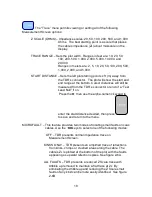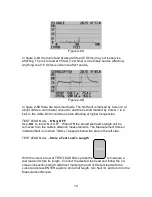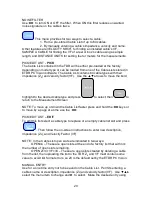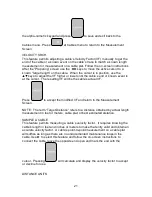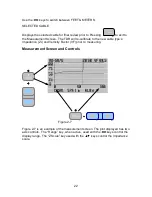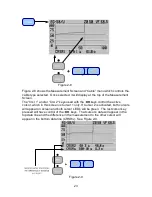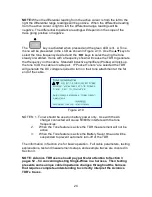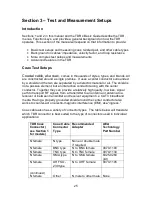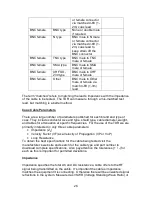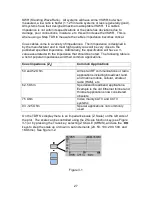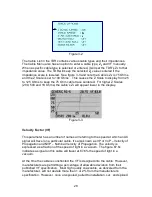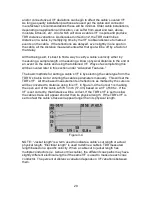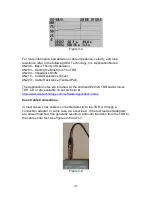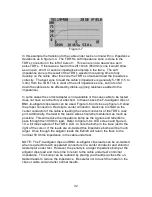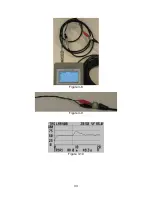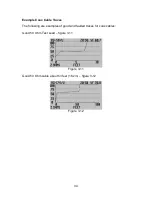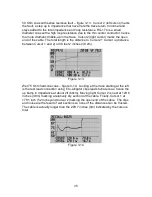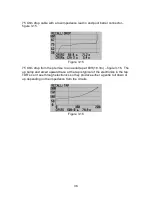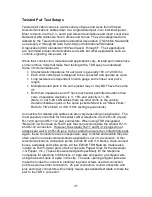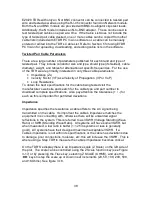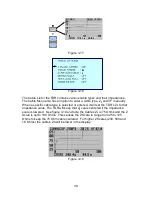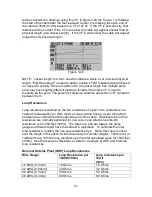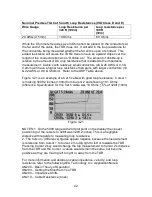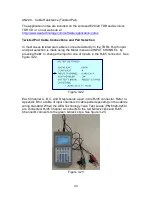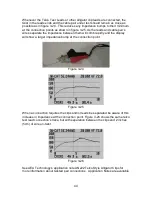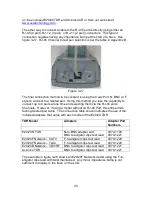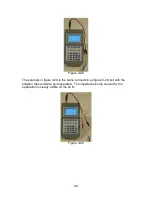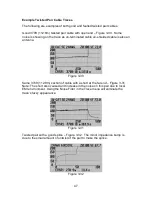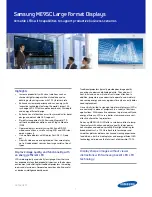
32
Figure 3-7
In this example the transition to the cable under test is normal with no impedance
deviations as in figure 3-4. The TDR’S’s soft impedance zone is close to the
TDR’s connector on the left of Cursor 1. This zone is not a dead zone as in
pulse TDR’s. If there was a fault in this 2ft 10inch (850mm) zone it would show
as an open, short, or serious impedance bump/dip in the trace. The soft
impedance zone is the result of the TDR’s waveform requiring time to fully
develop on the cable. After this zone the TDR’s cursors will read the impedance
correctly. The best zone to read the cable’s impedance is generally 5-10ft (1.5 to
3.0m) from the TDR. This is clear of the soft impedance zone, but not so far
down the cable as to be affected by dibble-up (loop resistance added to the
impedance).
In some cases the correct adapter is not available or the coax cable to be tested
does not have a connector yet attached. In these cases the F-to-alligator clips or
BNC-to-alligator clips leads can be used. Figure 3-8 and close up figure 3-9 show
the proper connection. Red clip to center conductor, black clip to shield so the
center conductor of the cable is feeding the center conductor of the TDR’s coax
port. Additionally, the twist in the lead’s wires should be maintained as much as
possible. This will reduce the impedance bump as the signals and reflections
pass through the 100 Ohm lead. Refer to figure 3-8’s LCD screen and figure 3-
10, a bit map capture of the TDR’s LCD, to note the bump in the trace just to the
right of the cursor. If the leads are un-twisted this impedance bump will be much
larger. Once through the alligator leads the E20/20 will return the trace to the
nominal 50 Ohms impedance in the cable under test.
NOTE: The F-to-alligator clips and BNC-to-alligator clips leads can be un-twisted
when required to reach separated connectors in a center conductor and shield or
twisted pair under test. However, the penalty is a larger impedance bump at the
alligator clips lead and more time to return to the cable under test’s nominal
impedance. This bump can be reduced by placing your hand(s) across the un-
twisted leads to reduce the impedance. Be careful not to touch the metal on the
clips or cable end and alter normal results.

